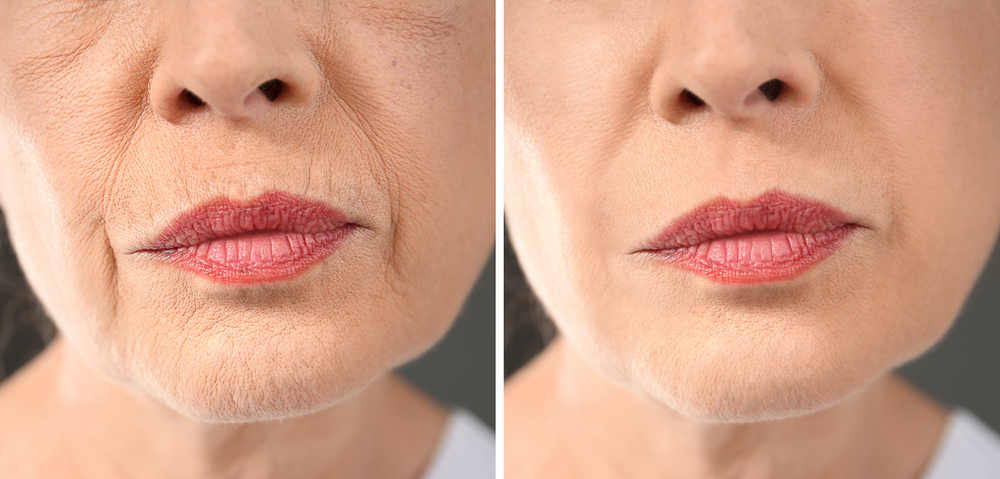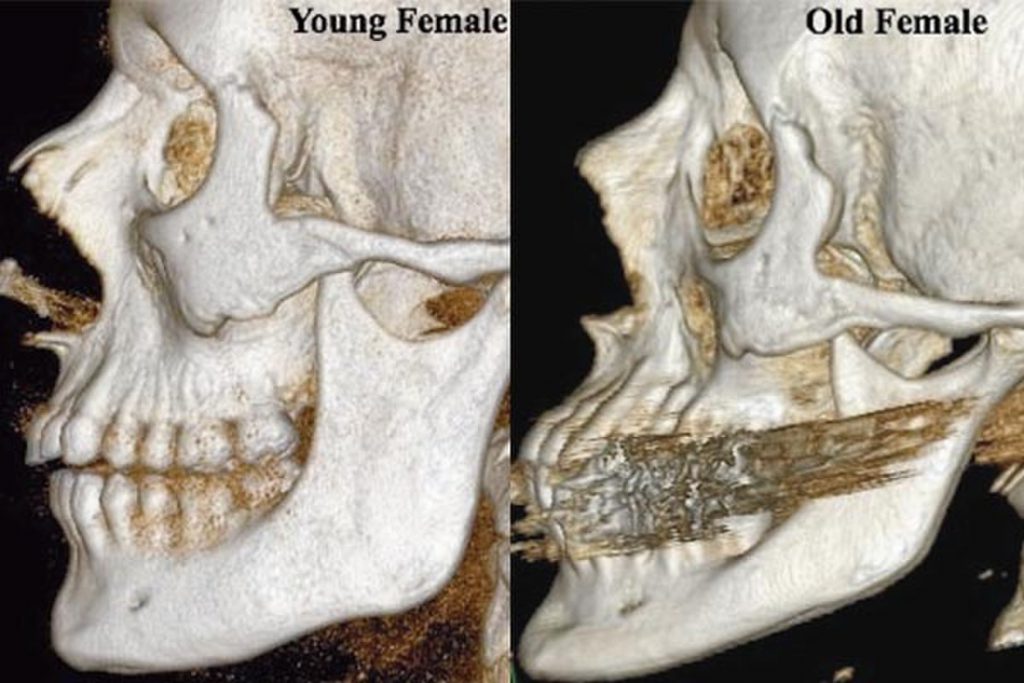What happens when we age?
In youth, the widest part of the face is the cheekbones and upper face, narrowing down to the chin, this is called the “triangle of youth”. With ageing the volume loss under the eyes, in the cheekbones and temples causes sagging and a widening of the jawline and jowls. The “triangle of youth” becomes the “pyramid of age”.
What are the reasons for these changes?
As we age, we lose facial fat, and bone causing an aged, hollowed out, tired appearance.
Fat can redistribute to the lower part of the face causing heaviness and pulling down the soft tissue structures.
Some muscles become overactive, increasing our dynamic lines and wrinkles and affecting the quality of our skin.
Our skin loses collagen and elasticity and becomes dehydrated and more crepey in appearance.
The combined effect in the various areas of the face leads to decreased support for the facial structures, and we develop a sagging face with lines, folds and wrinkly skin.
Volume loss is one of the most significant contributors to facial ageing. People who are overweight rarely develop this sign of facial ageing as their cheeks remain fuller and more rounded.
Where do we lose bone?
- The Temples
- Forehead
- Chin
- Mandible
- Check bones
Most people do not notice the hollowing that occurs in our temples as we age unless it is pointed out to them. This combined with the bone loss in our forehead can cause the brow to droop and the upper eyelids to sag.
Bone loss occurs in the midface under the nose, and the cheekbones recede. These changes cause the soft tissues in the mid-face to sag due to lack of support.
The bone loss in the mandible is considerable.
This fantastic article discusses the changes that occur to a females facial bone structure with ageing. These changes can be seen clearly in the following image.
Since it was published and the knowledge has been considered by plastic surgeons, aesthetic doctors and other cosmetic specialists. It has enlightened them to the causes of ageing and changed the way doctors think about their approach to treating the signs of ageing.
Where do we lose fat?
We lose fat from most of the fat compartments of the face as we age.
Many people notice how we develop a loss of prominence in the cheek area, but most do not realise these hollow cheeks can sometimes cause a hollowing effect around the eyes, accentuating dark eye circles.

Sadly some of us also gain fat in the lower face which pulls down the sagging soft tissues even further.
How can we treat these signs of ageing?
In the past, a sagging face was treated surgically, by removing skin and repositioning the soft tissues. Unfortunately, this does not address volume loss, nor does it improve skin quality.
Dr Teri Johnson has studied the ageing face for many years. She has attended courses for years covering the anatomy of the face and how it changes with age. She has put this knowledge into practice and has gained a lot of experience treating faces of all ages.
Dr Teri certainly can not achieve the results of a facelift. However, by treating the areas of volume loss, she can reposition the soft tissues and reduce sagging. Using a combination of treatments, she can replace volume loss safely to inflate the face and also rejuvenate the skin to restore a fresher appearance without looking treated or overdone.
Treatments used commonly by Dr Teri include:
Volume Replacement
Using Dermal Fillers or Collagen Stimulators such as Sculptra or Ellansé.
Skin Rejuvenation
Using skin boosters such as Profhilo or Collagen Stimulators in the skin.




